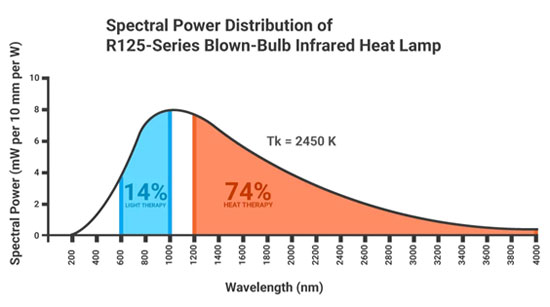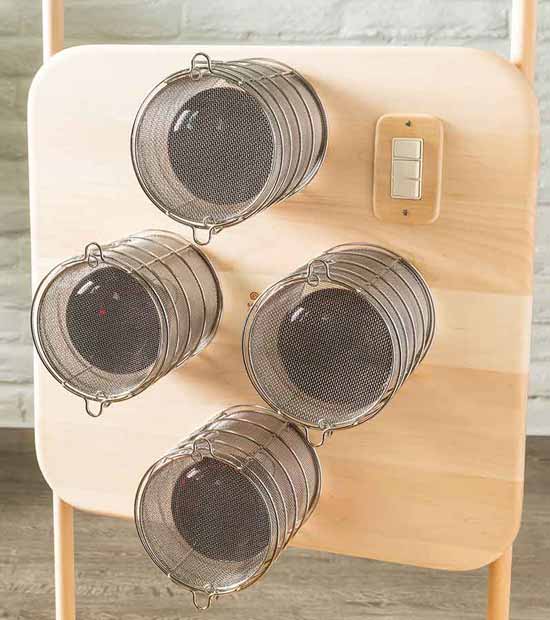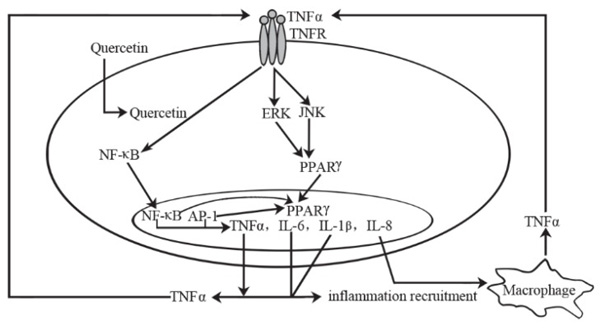The Stunning Health Benefits of Sauna Therapy
In a recent MedCram interview (above), Rhonda Patrick, Ph.D., cofounder of Found My Fitness, provided a wonderful summary of the benefits of sauna therapy, and some of the basic principles of sauna treatment.
Further below, I’ve also included another excellent video featuring neuroscientist Dr. Andrew Huberman, in which he takes a deep dive into the science of how and why heating is so beneficial for health, both when locally applied and when using a sauna.
I have been a huge fan of sauna therapy for nearly a decade and have learned a great deal along the way. In later sections, I will attempt to summarize my understanding of how to best implement sauna for maximum biological benefits, which include detoxification and heat shock protein amplification. I’ll also review how you can get the benefits of photobiomodulation from your sauna by using heat bulbs that also provided near- and mid-infrared frequencies.
Temperature Matters
The key to achieving the first two benefits — detoxification and heat shock protein amplification — is to make sure the sauna is hot enough. Most all of the research documenting sauna benefits comes from Finland, which uses traditional saunas where the temperatures range from 160 to 200 degrees Fahrenheit.
Most saunas sold in the U.S. are far-infrared (IR) which are considerably more energy efficient than a Finnish sauna and typically less expensive. However, there are several problems with most far-IR saunas. When they were initially introduced in the U.S., most were very high in magnetic and electric fields (EMF).
Over time, most of the far-IR sauna companies have been able to radically reduce the magnetic fields but it is the rare company that has eliminated the electric fields. Buyer beware, as there are a number of popular IR saunas today that are very high in both magnetic and electric fields. These tend to be the smaller, typically portable units where your head sticks out.
But there’s an even more important consideration with far-IR saunas than EMF, and that’s the temperature they can reach. It is the rare far-IR sauna that is able to go higher than 140 degrees F., and this simply isn’t hot enough to provide the detox and heat shock protein benefits achieved at 160 degrees F.
So, my recommendation is to steer clear of buying most far-IR saunas. There are some that would reach the temperatures needed and are essentially EMF-free, but there is an even better approach that I will discuss in the following sections.
If you have already purchased a far-IR sauna, there’s no need to worry or have buyer’s remorse. You can easily modify your sauna to be one of the best in the world. Before I get into that though, I’ll summarize some of the information Patrick shares in her interview.
The Duration of Each Session Matters
The duration of each session is also important, with respect to the robustness of the results. Patrick cites research from Finland, which used traditional Finnish sauna at 174 degrees F., with a humidity level between 10% and 20%.
Using this kind of sauna, people who used the sauna four to seven times a week, for 19 minutes or longer, were 50% less likely to die from cardiovascular-related disease. Those whose sessions averaged only 11 minutes only reduced their cardiovascular death risk by 8%, which is no minor difference. So, the sweet spot appears to be about 20 minutes, four to seven times a week, in a 174-degree F. sauna.
The Many Health Benefits of Sauna Therapy
Research has demonstrated sauna use can:
|
Improve cardiovascular fitness and lower your risk of death from cardiovascular disease, stroke and heart attack |
|
Lower your blood pressure |
|
Lower your risk of dementia |
|
Improve your mood and mental health, and reduce symptoms of depression, in part by sensitizing opioid receptors |
|
Strengthen your immune function |
|
Reduce all-cause mortality |
|
Improve athletic endurance |
|
Reduce inflammation by lowering c-reactive protein, and increasing IL-10 and IL-6 (a.k.a. myokine), and activating Nrf2 |
|
Activate and replenish stem cells |
|
Improve fasting glucose and insulin sensitivity |
|
Reduce the stress hormone cortisol1 |
All of these benefits occur in a dose-dependent manner, so the more frequent your sauna use, the more robust your benefits will be.
For example, using the sauna two to three times a week has been shown to reduce your risk of cardiac death by about 22% compared to once-a-week use, whereas those who use it seven times a week lower their risk by 63%. Similarly, those who use it four to seven times a week have a 40% lower all-cause mortality risk than those who use it only once a week.
And, as explained in the interview, combining sauna with other strategies, such as cold-water immersion and/or exercise can optimize these kinds of benefits even further. That said, more sauna is not necessarily better in all instances, as you will lose toxins but might also deplete your body of beneficial minerals.
Sauna Therapy Mimics Moderate Exercise
While there’s a well-known aspect of meditation to sauna bathing, it actually mimics moderate cardiovascular exercise, triggering many of the same physiological responses — and benefits.
Physiological responses that mimic those of exercise include sweating, increased blood flow to the skin and muscles, increased plasma volume and elevated heart rate, lowered blood pressure, endorphin release and increased brain-derived neurotrophic factor (BDNF, which acts as an antiaging agent for the brain).
These help account for many of the cardiovascular benefits of sauna, as well as some of the neurological benefits. Sauna is also an excellent adjunct to exercise, as the two augments each other’s benefits.
Patrick cites research comparing people who did aerobic exercise only, sauna only, and those who did aerobic exercise in combination with sauna. In the final analysis, those who did both had better cardiorespiratory fitness than those who did either alone.
The Science of Heat and Heating for Health and Healing
For an even deeper dive into the science and benefits of heating, be sure to listen to this Huberman Lab Podcast (video above). For example, heat stress, such as sauna bathing, but also locally applied heat, will convert white fat, which is not very metabolically active and acts as a fuel reserve (basically what we think of as body fat), into beige and brown fat, which are rich in mitochondria.
The mitochondria in beige and brown fat act as a sort of furnace for the heating mechanism in your body, and as a result increase your metabolism and the burning of fat. Huberman also discusses a sauna protocol involving repetitive hot and cold exposure that can increase the amount of growth hormone 16-fold, and other recent science findings.
Why Heat Shock Proteins Are so Beneficial
As their name implies, heat shock proteins are activated by heat stress. Patrick cites research showing sitting in a 163-degree F. sauna for 30 minutes raises heat shock protein levels about 50% above baseline, and once activated, they remain activated for about 48 hours. Importantly, heat shock proteins refold misfolded proteins inside your cells and help proteins maintain their three-dimensional structure. This allows the proteins to function normally.
Unstructured proteins tend to aggregate, and these aggregates can then form plaques in your vascular system or brain, contributing to neurodegenerative diseases and cardiovascular problems. This can be very useful in dementia, where misfolded proteins like beta amyloid and tau proteins accumulate and contribute to memory deterioration.
Heat shock proteins have also been shown to prevent muscle atrophy, even if the heat is merely applied locally. As noted by Patrick, this has major relevance for those with sarcopenia (age-related muscle loss) and the physically disabled. They may not be able to exercise, but they can sit in a sauna.
Effective Detox With Sauna
Sauna bathing is also an effective way to detoxify your body of any number of toxins, including heavy metals and various chemicals. Patrick notes:
“Compounds like heavy metals ... phthalates or BPA can be excreted through sweat or ... through urine. Some are excreted more predominantly through sweat and others are more predominantly excreted through urine, so for the ones that are more predominantly excreted through sweat, you can imagine the robust effect that sauna use has on them — cadmium being one.
There's been studies looking at sweating from sauna use where there's a 122-fold increase in sweating out cadmium. Another one is aluminum. Aluminum is also excreted quite well from sweat, and you do excrete things like BPA, [even though] the major pathway that BPA is eliminated through is through urine.”
Basic Guidance for Safe Sauna Use
While sauna use is safe for the vast majority of people, it’s best to discuss it with your doctor before starting. Some basic guidance for safe sauna use include:
|
Set a timer in case you get drowsy, and either have someone with you in the sauna or have someone come check on you from time to time |
|
Start slow and work your way up to the recommended temperature and duration ranges |
|
Rehydrate with electrolytes to replace lost sodium and minerals. One simple option is to make a salt sole with Himalayan salt crystals dissolved in water, and take some extra magnesium |
|
Never drink alcohol before or during sauna use, as it could have lethal consequences |
|
Take extra precautions if you’re elderly, have recently had a heart attack or other cardiac problem or have low blood pressure |
|
Children do not have the same thermal regulation mechanisms as adults, so they should limit their time in the sauna to five minutes |
|
Avoid sauna bathing while pregnant, as there may be poorly understood risks to the fetus |
Can Sauna Reduce Your Diabetes Risk?
Interestingly, sauna use may also reduce your risk for diabetes by improving fasting glucose and insulin sensitivity. While this is mostly speculative at this point, it does makes sense to me, so I think it’s likely. Curiously though, glucose can actually read high after sauna use, but over time, your metabolic flexibility will improve, as well as your glucose control. Patrick explains:
“There may just be some kind of funny thing going on, honestly. It might have a lot to do with the sweating ... [It] makes sense that if you're sweating ... the concentration of sugar is going to appear higher, but that's not a real thing. It’s just concentration.”
How Photobiomodulation (PBM) Can Boost Sauna Benefits
As mentioned, photobiomodulation or PBM can turn the benefits of sauna therapy up another notch. PBM is simply the term used to describe the use of light therapy to achieve beneficial biological effects. Typically, this involves using red and IR wavelengths with enough energy to improve health. The primary benefits of PBM are twofold.
The traditional view is that the frequencies activate cytochrome IV in the mitochondria to improve the efficiency of ATP generation. Recently, it became clear that red and near-IR light also increase melatonin production in the mitochondria, which decreases oxidative stress and secondary free radical damage in the mitochondria.
While traditional and some far-IR saunas can provide outstanding benefits in detox and heat shock protein generation, neither of them provide the light wavelengths to generate PBM benefits.

Fortunately, there is a type of sauna that can provide all three benefits, and that would be a sauna that uses incandescent heat lamps that produce the majority of the heat as mid-IR, and a significant percentage of near- and mid-IR frequencies capable of producing PBM benefits.
While you can create your own bulb system to build this kind of sauna, there is a company that has done the hard work and created panels with four bulbs that are of the highest quality, and have a guard over the bulbs that prevent glass from injuring you in the event that a bulb might break.

Breaking bulbs during use is usually the result of spilling some kind of liquid on the hot bulbs. This could be your sweat or a drink that might be in the sauna. The shields also protect you from serious burns if you accidentally touch the hot bulbs. You will still get a burn on the shield, but it will be far less severe. The name of the company that provides these bulb units is Sauna Space.2
Sauna Space does sell complete saunas, but in their current configuration, I believe there is room for improvement. The one with a faraday cage that blocks external EMFs is $5,000 and the one without that shielding is about $3,000. They are not as elegant as most IR saunas and most people have to bend over to fit in them, but the major problem is that they aren't hot enough. The current configuration offers one set of four bulbs, which will get the temperature to around 125 degrees F.
While I have been enamored with Sauna Space for some time, I want to express my gratitude to Ari Whiten in helping me understand one of their main flaws, their single panel saunas don't get hot enough. Fortunately, the simple fix is to merely double the number of bulbs from four to eight. I've shared my thoughts with Brian, the founder of SaunaSpace, and they're currently developing an eight-bulb system that meets this specification. I've been using a prototype for nearly a year and the sauna can easily get up to 200 degrees F.3
This is far too high for most, as unlike conventional or far IR saunas, these frequencies can actually penetrate a few inches into your body, and heat you up far more effectively than either of the other types of sauna. Most people achieve the optimal heat shock protein and detox benefits by starting at 140 degrees and building up a tolerance. Over a few weeks, you should be able to increase the temperature to 160 degrees F.
How Do You Know if the Sauna Is Hot Enough?
How can you determine the air temperature of your sauna? You can get an analog thermometer that goes up to 180 degrees F. for about $10 on Amazon. Once you know the temperature of your sauna, you will be able to correlate it with the biologic reactions that indicate you have achieved a high-enough core body temperature.
The first and most important criteria is to make sure you are sweating enough. The easiest way to do this is to accurately measure your naked body weight before going into the sauna and then re-weigh yourself naked when you get out.
One pint of water (sweat) equals 1 pound. Depending on your size, you should lose 1 to 2 pints during the therapy. The most I have lost is 4 pints of water, which is half a gallon or two liters of water. This was before I had the temperature dialed in as that is too great a water loss. Ideally, you'll want to lose between 1 and 2 pints of water (a drop of 1 to 2 pounds of bodyweight) during a session.
One of the things you can do about one hour before your sauna is drink a quart of water. It's best to add some electrolytes. I use two packets of our Pure Power electrolytes in the water along with a teaspoon of glycine powder.
The other biologic parameter you can measure is your body temperature. You can use a simple oral thermometer to measure your temperature before and immediately after the sauna. Your temperature should increase by 3 to 5 degrees F. If you meet the temperature and sweat criteria, your sauna is hot enough to detox and generate heat shock proteins.
How to Convert a Far IR Sauna to One of the Best in the World
The good news is, if you already have a far IR sauna, it's incredibly easy to convert it into a near-IR sauna. All you need to do is to remove the bench seat and install a set of hooks to hang the heat lamp panels. You will need two four-bulb panels for a total of eight bulbs.
Each panel has three switches that allows you to have a great deal of control in modulating the heat output. When you first turn on the panels, you'll want all the switches on so the sauna can heat up rapidly. With all eight bulbs on, most saunas will be able to heat up to 160 degrees F. in about 20 minutes, which is far quicker than the time it takes for a far IR sauna to reach maximum temperature.
You will also need a stool to sit on, as the bench will be removed. You can get a nice untreated basswood stool from Sauna Space,4 but it's a bit pricey at $250. Just make sure to use a stool that doesn't outgas toxic substances at high temperatures. Wood will not outgas, but many synthetic materials will.
How to Use Your Near-IR Sauna
Once you are in the sauna, the total treatment time is 20 minutes. It's best to bring a timer into the sauna so you can switch positions every five minutes. First, sit on the bench facing the bulbs. You should be about 2 feet away. If the heat is too intense, move further back.
After five minutes, turn around on the bench with your back facing the bulbs. The next five minutes, you can turn around but stand up facing the bulbs. The last five minutes turn around again so you are standing with your back to the bulbs.
It is helpful not to look at the bulbs for long periods. You also might want to consider a cooling ice wrap5 around your head, as it does not appear to be necessary to heat your bran in the sauna. An ice wrap will help keep your brain cool. Men might also want to put a towel over their scrotum so their genitals don't heat up, which could impair sperm production.
It will also be important to use enough towels to capture all your sweat. Remember, you will be sweating nearly a quart (1 liter) of water. If you don't capture your sweat, you will contaminate the sauna with the toxins you are excreting. Even worse, you will create an environment that will lead to mold growth, and the mold toxins will likely be worse than the ones you are excreting.
Building Your Own Sauna
If you don't already own a far IR sauna that you can convert, then one option is to purchase a used one. You might even be able to find a far IR sauna that is not working and the owner is willing to give it to you for free. That will work, as you will not be using the heating element in the sauna anyway. You're merely using the sauna as an enclosure for the heat lamp panels, so you can heat the space up to 160 degrees F.
You might be able to use two panels in a shower if you have a walk-in shower. However, you will need to be very careful not to get any water on the bulbs as they can burst and, obviously, water and electricity and not a good combination as you could get electrocuted. But it is technically possible, especially if you have someone skilled install it.
The last option might be the best, as you can create a custom sauna for yourself and your family that is even better than a wooden IR sauna. You can create a room with the dimensions below, and then tile the entire inside of the room. The benefit of tiles is that they are very easy to clean, which is important, as anyone using the sauna will release toxins that should be washed out.
If you want to go the extra step you could even put a drain in the floor to make cleaning even easier. Installing a glass shower door for the entrance would also work well. It would also make sense to shield the room with a radiant barrier material commonly used for roofs. This will reflect the IR radiation back into the sauna and serve to allow the sauna to heat up even faster. It will also help shield the sauna from external EMFs.
Here are the interior dimensions of the near IR sauna. You could make it larger but it will take longer to heat up the space:
- Length — 60 inches (from back of saunas where lights are, to the glass shower door in the front)
- Width — 52 inches
- Height — 78 inches
- Tile for all interior surfaces, and one floor drain
from Articles https://ift.tt/wJQoEvq
via IFTTT

